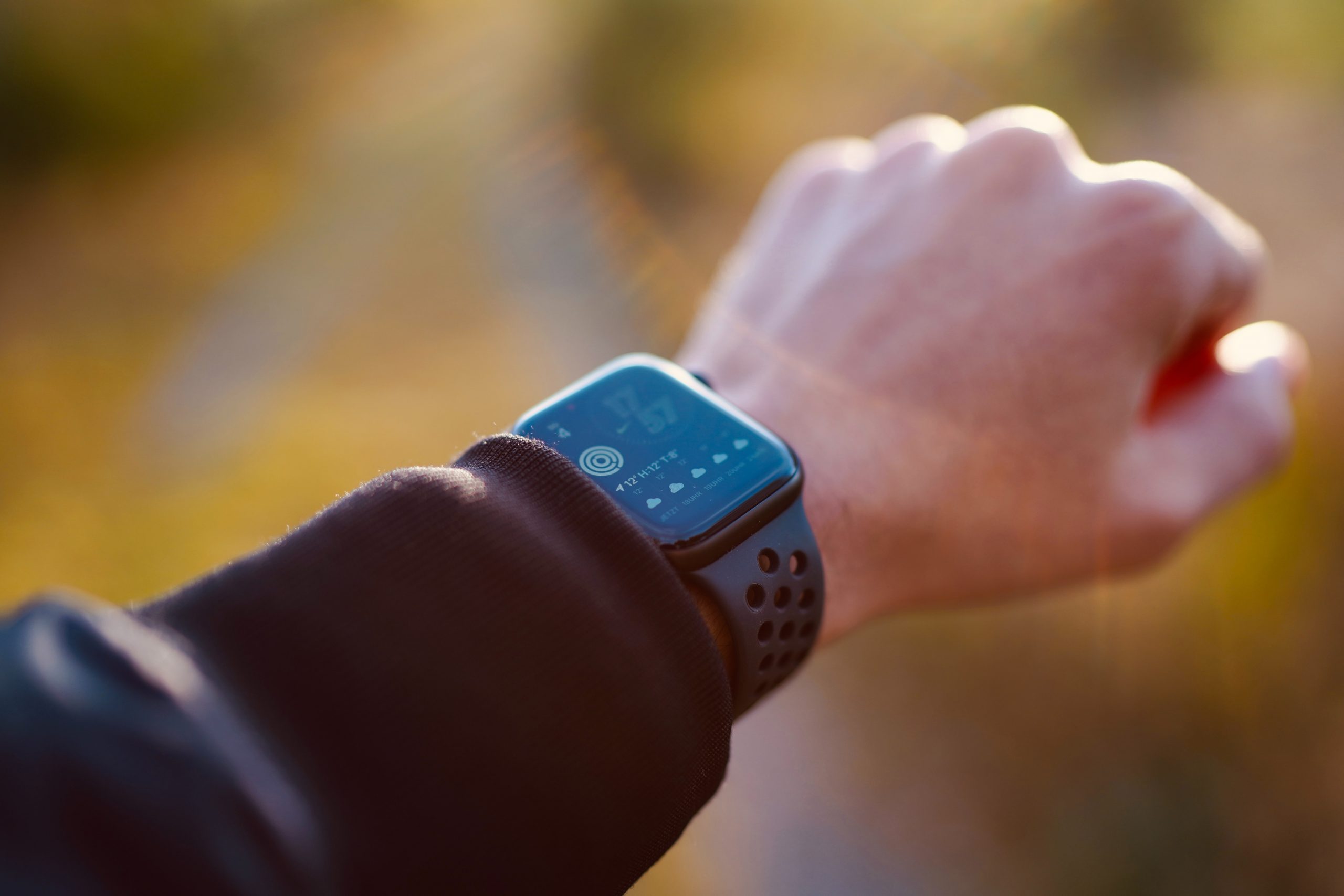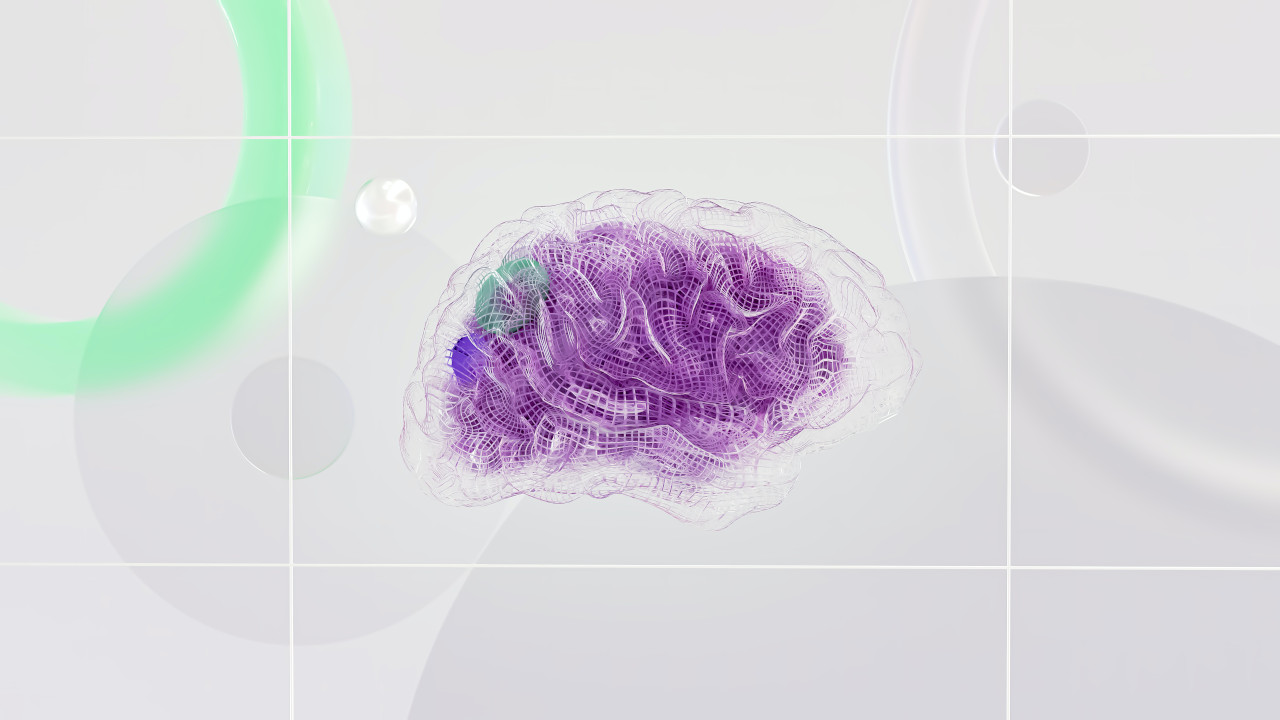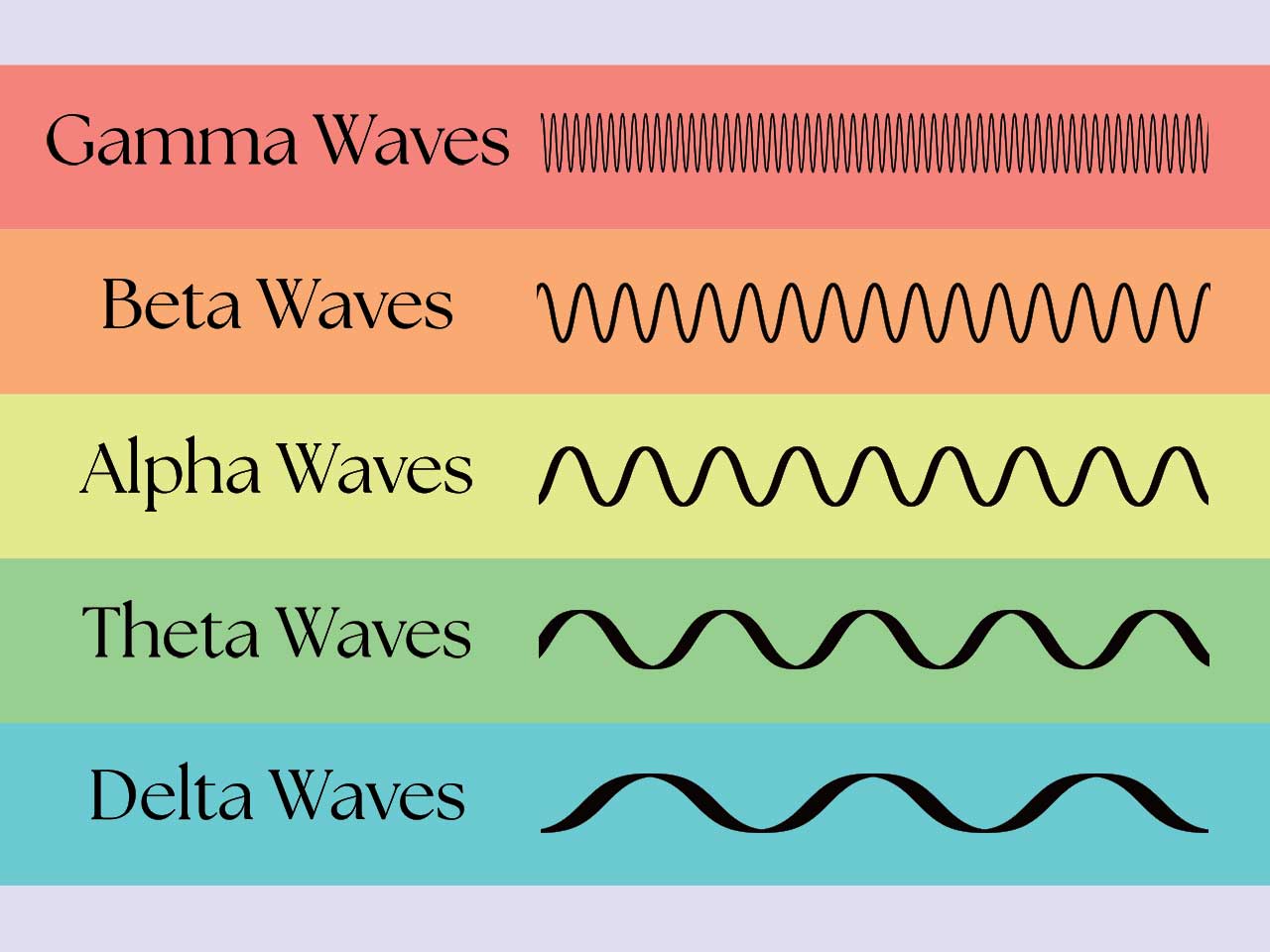Despite the incredible benefits and advantages of the modern world, many of us find ourselves under considerable stress and anxiety.
When we’re stressed the body engages in a specific set of behaviours. The heart speeds up, pupils dilate, digestion halts and muscles tense.
These behaviours can help in certain stressful situations, especially short-live situations, but when they’re prolonged or in response to something that’s not truly threatening, they create more problems than solutions.
According to the American Institute of Stress, 77% of people say they experience physical symptoms caused by stress, and almost half say stress has a negative impact on their lives.
It is no wonder why people are turning to stress management techniques such as meditation. We need better ways to manage the stressors in modern life, but now modern technology is partnering with us to achieve this goal.
Before we look at what this technology is, it’s best to understand what’s happening in your body when you stress out.
Healing The Nervous System
The body’s nervous system is divided into the central and peripheral systems. The central nervous system (CNS) is your brain and spinal cord, while the peripheral nervous system (PNS) consists of the nerves running throughout your body.
Two important systems within the PNS include the sympathetic and parasympathetic nervous systems. Together both systems maintain an intricate balance.
The sympathetic nervous system kicks into gear when we’re stressed. It’s responsible for the fight-or-flight response. The parasympathetic nervous system works in the opposite direction when we need to rest and digest.
When one is active, the other is suppressed, and your body engages in vastly different functions depending on which system is currently active. Here’s a broad overview:

While most of the activity in these two systems happens automatically, there are things you can do to help push your body towards one or the other—and the big one here is breathing exercises, which can help you get your parasympathetic system rolling.
HRV (Heart Rate Variability) Biofeedback Training
By taking control of your breathing, you can gain indirect control over your heart rate. The age-old advice to take a deep breath when you feel overwhelmed has plenty of science behind it.
This alone is enough to help you take more control of your body and mind, but there is more to breathing exercises than simply relaxing—the right exercises can improve your ability to handle stress, even when you’re not doing the exercises.
When you breathe in, your heart speeds up slightly. When you breathe out, the reverse happens. This means the time between your heartbeats is constantly changing, not monotonous like is often thought.
The difference between those durations when you’re inhaling or exhaling represents your heart rate variability (HRV), and it’s considered a marker of self-regulation.
Patrick Whitehead writes, “At maximum HRV, your heart rate will be at its highest at the peak of the in-breath, and the lowest at the peak of the out-breath. This is known as heart rhythm coherence, and it is the goal of HRV biofeedback.”
HRV biofeedback training can make our hearts more responsive and resilient to the stressors we face in life, and can make us more aware of those responses when they occur.
But first, we need to know how to see and make sense of the signals, and this is where HRV biofeedback devices come in.
The Best HRV Biofeedback Devices For Stress Relief
We get feedback from our body all the time—when we’re hungry, tired, sad or upset, in pain, when we shiver or sweat, or get goosebumps. The body is responding to something in a very specific way.
We can get feedback from our hearts, and we don’t need a device. You can put your hand on your neck, or go for an intense run to the point you can feel it beating in your chest.
However, a device can offer us a more accurate recording and a more comprehensive analysis. They can measure activity when we’re thinking about something else and alert us to anything that would have fallen below our level of awareness.
Getting this type of HRV biofeedback training used to be very expensive and required heavy equipment, now it’s affordable and can be strapped conveniently to your body.
Below are the best devices on the market today, with enough variability to suit most people’s desires and constraints.
1. HeartMath Inner Balance
 The Inner Balance attaches to your ear, but rather than a standalone device with a built-in display, Inner Balance connects to your phone or tablet via Bluetooth (there is also a wired Lightning version that connects via cable).
The Inner Balance attaches to your ear, but rather than a standalone device with a built-in display, Inner Balance connects to your phone or tablet via Bluetooth (there is also a wired Lightning version that connects via cable).
This makes it more comfortable and inconspicuous and is better for those moving around and not wanting to carry much extra weight. It also means you can see more real-time data on your phone.
When you open the app, you’ll be presented with a coloured wheel that slowly expands and contracts, your job is to keep your breathing in time with it. The goal is to get the outer circle green to represent better resonance, with blue suggesting there’s still room for improvement and red meaning you’re further off.
Hearthmath also offers the standalone EmWave 2 if you want to use their technology without an iPhone or Android smartphone.
Inner Balance is more affordable than the EmWave 2 at $160. One downside is that it requires an Apple or Android device, though that is unlikely to trouble most people these days.
2. Pulsetto

If you want to get to the root of stress, a promising new series of biofeedback devices that stimulate the vagus nerve is emerging with affordable Pulsetto being the best selling device so far.
The Pulsetto helps improve your HRV by producing a light electrical vibration that activates your parasympathetic nervous system, which engages your relaxation response and reduces stress and anxiety within minutes.
A consistently poor HRV reading upon waking suggests that your sympathetic nervous system is on overdrive so having a device that can effortlessly put you into a relaxed parasympathetic state like this can be a game changer for sleep and wellness.
Their website lists the retail price as $549 but it seems they are always offering huge discounts so you can pick up this vagus nerve stimulating biofeedback device for around $249-$300 usually.
3. Unyte iom2
 The iom2 comes in three parts: a sensor that clips onto your ear, which sends data via cable to a phone-sized device, which pairs via Bluetooth or USB to a program on your computer, tablet, or smartphone.
The iom2 comes in three parts: a sensor that clips onto your ear, which sends data via cable to a phone-sized device, which pairs via Bluetooth or USB to a program on your computer, tablet, or smartphone.
Using the software, you can start up one of Unyte’s 8 journeys, immersive and interactive meditations that engage you in different breathing exercises.
As you go through these meditations the device will monitor your HRV and give you a real-time resonance score. Your HRV should improve as you progress, so you have a positive summary of the results at the end of the meditation, and over the longer time frame.
Pricing for Unyte’s iom2 comes in two subscription models: for $200 you get the device and a one-year subscription to the software and meditations ($60 per year thereafter), or for $350 you get the device and a lifetime subscription.
4. Muse S Headband

The Muse S Headband allows you to train your brain waves using EEG (Electromyography) as well as your heart using immersive soundscapes where you actually hear your heartbeat played back to you in real-time in the sound of a rhythmic, soothing drum.
Their heart experience monitors your heart rate using a PPG sensor placed in the middle of the forehead on the headband. While they don’t give you a specific measure of HRV, their real-time biofeedback on the rhythm of your heartbeat provides similar feedback to slow your heart rate, find calm and improve self-regulation.
They offer a huge variety of guided meditations in their app that makes use of real-time heart and brain wave monitoring to help guide you into deeper states of relaxation.
The Muse S device starts at $399 and there is a paid subscription for the app after the first year.
5. Apollo Neuro
 The Apollo Neuro was launched in 2020, and given the stressful situation the world has been placed in, the timing worked in their favour—the devices flew off the shelves and sold out in two weeks.
The Apollo Neuro was launched in 2020, and given the stressful situation the world has been placed in, the timing worked in their favour—the devices flew off the shelves and sold out in two weeks.
What you’ll get if you buy the Apollo Neuro is a device that straps to your wrist or ankle and a smartphone app. The device has a few controls on the side so you won’t need your phone for everything.
The Apollo Neuro is more about HRV training than biofeedback. Rather, the device is designed to produce low-frequency inaudible sound waves, and these gentle vibrations act on your nerves to alter how you feel.
Using the app you can choose from 7 modes for these vibrations, such as ‘Energy and Wake Up,’ ‘Clear and Focused,’ and ‘Meditation and Mindfulness.’ After selecting the mode you can also adjust the intensity and define for how long it should run.
While it may lack biofeedback, it is capable of improving your HRV. Their research has found a 25% improvement in cognitive performance, a 2 – 3 times improvement in HRV, and 40 – 50% reductions in stress and anxiety.
Of the downsides, the price is on the higher end of the spectrum at $349. Some have also complained about the battery life. The fact it doesn’t record any data also means there’s not much analysis of your HRV, so it’s difficult to see how well it’s working.
6. EliteHRV App

EliteHRV recently discontinued its CorSense HRV device but their excellent HRV training app still works with a Polar H10 chest strap or a Scosche Rhythm Heart Rate Monitor Armband.
They don’t offer the guided meditations and real-time training options of the Heartmath or Muse biofeedback devices but if you just want to track your heart rate variability improvements over time then EliteHRV is the best app to do that.
Part of the biofeedback that EliteHRV provides is something called a ‘daily morning readiness score.’ This is a short 1 – 5 minute reading taken first thing in the morning.
This is ideal because throughout the day there are many stressors that impact our heart rates, making it difficult to know what your personal baseline is, first thing after you wake up is the best time to figure it out.
The app has a free version, a Personal Pro option for $8 per month which includes a web dashboard and advanced analytics, and a Team Pro option for $30 if there’s more than one of you.
7. Lief
 The Lief system consists of ECG (electrocardiogram) adhesive stickers you attach to your body, which gather data and send it to the main Lief device, and from there to the Bluetooth connected Lief mobile app.
The Lief system consists of ECG (electrocardiogram) adhesive stickers you attach to your body, which gather data and send it to the main Lief device, and from there to the Bluetooth connected Lief mobile app.
The adhesive stickers mean Lief can hide inconspicuously under your clothing, it’s comfortable and can be used while moving about. There’s also an optional athletic strap to keep them firmly in place if you want to exercise and work up a sweat.
Another great thing about Lief is it doesn’t require constant monitoring of your phone. It’s designed to be worn for hours each day (8+ by their recommendations), which makes device monitoring unfeasible.
Instead, Lief will alert you by vibration when your HRV dips below a target range. At that point, you begin breathing in time with the vibrations while the device continues to monitor your HRV.
Once your HRV rises back above the threshold, the vibrations end and you continue your day in a better state.
They are also the first to offer personal HRV coaches to help you better understand and evaluate your data. You talk with this coach several times per week over an eight week period, to set goals and get advice and feedback.
While at one point you could buy the device, they now only offer subscriptions in which you rent it for $99 per month with the coach, or you can go it alone for $49 per month.
One downside to adhesive stickers is that they last between 2 – 5 days before needing to be replaced. A pack of refills is included when you purchase it, but when you need a new pack you can get 15 for $19.99. The hassle might be enough to put some people off.
Which Biofeedback Device Is Right For You?
Each of these biofeedback devices is quite unique, meaning anybody should be able to engage in HRV training while taking into account your personal constraints and requirements.
For those interested in a device they can use on the go and that doesn’t require their constant attention, Lief’s adhesive stickers or Apollo Neuro’s wrist strap will be the most comfortable.
Anybody wanting to sit still in a calming digital environment will be pleased with the Muse’s heart meditations, the simplicity of using Pulsetto’s vagus nerve stimulation for stress relief or the guided HeartMath biofeedback HRV training.
Given the prevalence of heart-related health problems facing so many of us today, taking some measures to strengthen that all-important organ is highly recommended.
These devices each have something to offer in that way, whether it’s simply by recording data or by taking you through interactive environments and training games.
But it’s also important to remember that you can engage in HRV biofeedback training yourself, without any device. You won’t get as accurate feedback, but you will still see health-related gains.
Just breathing slowly and consciously, or sitting down for a little meditation, while paying close attention to what you feel and your state of mind, are great ways to get your brain and heart inline.
Perhaps the greatest advantage the devices offer is that they should help you become more aware of the signals your body naturally sends.
After some time you may begin to notice the signs you would otherwise miss, and you will know how to interpret them and what to do about them. This isn’t just about training your heart and HRV, it’s also about learning how to respond to the stressors in life.
- How The Muse S Athena Works For EEG And fNIRS Neurofeedback - April 24, 2025
- The 10 Best Pomodoro Timer Apps For Remote Workers - April 11, 2025
- Hacking The Flow Cycle: Brainwaves, Creativity and Flow States - April 11, 2025





 This website uses cookies to improve your web experience.
This website uses cookies to improve your web experience.